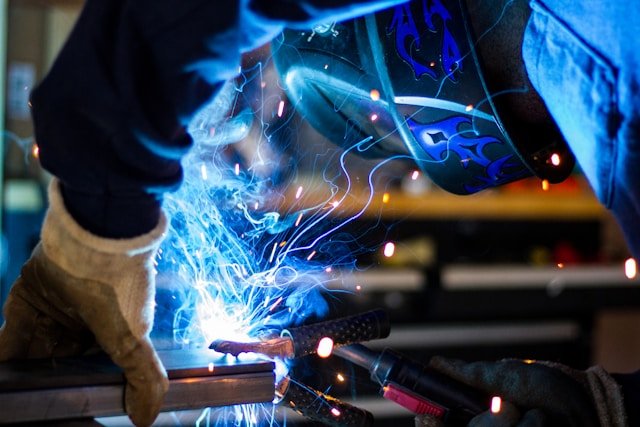Introduction
In the realm of modern manufacturing, the term ‘automation’ echoes a pivotal revolution, transforming traditional production floors into dynamic powerhouses of efficiency and precision. As MCC panel manufacturers integrate advanced automation systems, they are not just enhancing productivity but also leveraging this technology as a strategic tool to bolster competitive advantage and sustainability in a rapidly evolving global market.
This exploration into the power of automation will unveil its profound impact on the manufacturing industry, discussing both its transformative benefits and the nuanced challenges it presents.
The Evolution of Automation in Manufacturing
The journey of automation in manufacturing dates back to the early mechanical assemblies of the 20th century, but it was the introduction of robotics in the 1960s that marked the dawn of a new era. Since then, the evolution has been relentless, fueled by advancements in computer technology, artificial intelligence (AI), and robotics.
Today, automation stands as a cornerstone of industrial strategy, driven by its capability to perform tasks ranging from the mundane to the extraordinarily complex with unparalleled precision and efficiency.
Core Technologies Driving Manufacturing Automation
Manufacturing automation is underpinned by several key technologies that collectively enhance operational throughput and quality:
- Robotics: Industrial robots are the stalwarts of manufacturing floors, executing tasks with speed and accuracy that human hands cannot match. From assembling components to handling hazardous materials, their versatility is unmatched.
- Artificial Intelligence (AI): AI transforms vast amounts of data into actionable insights, enabling predictive maintenance, quality control, and even managing supply chains with predictive analytics that anticipate market demands.
- Internet of Things (IoT): IoT devices streamline operations by providing real-time data from across the manufacturing process, allowing for immediate adjustments and enhanced monitoring to ensure continuous operation without downtimes.
Benefits of Automation in Manufacturing
The implementation of automation technologies in manufacturing reaps significant benefits:
- Enhanced Productivity: Automation increases production rates through continuous operations and faster cycle times, significantly reducing the time from start to finish in the production of goods.
- Improved Quality and Consistency: Automated systems minimize human error, ensuring each product is built to the same specifications and quality standards, enhancing customer satisfaction and reducing waste.
- Worker Safety: By handling dangerous tasks, such as operating in hazardous environments or lifting heavy objects, automation reduces the risk of injuries, promoting a safer workplace.
- Cost Efficiency: Although initial setup costs for automation can be high, the long-term savings in labor costs, reduced waste, and enhanced productivity ensure a favorable return on investment.
Real-World Applications of Automation in Manufacturing
Incorporating case studies or examples here provides tangible insights into how automation impacts production lines globally:
- Automotive Industry: Automakers have been pioneers in adopting automation, using robots for everything from welding and painting to assembly and inspection, streamlining production while ensuring precision and quality.
- Pharmaceuticals: In an industry where precision and compliance are paramount, automation helps maintain stringent standards, from the assembly of tiny components in medical devices to the packaging of medications.
Strategies for Successful Automation Implementation
As manufacturers look to harness the power of automation, it’s crucial to approach implementation strategically. This section outlines key strategies that ensure the successful integration of automation technologies in manufacturing environments:
- Comprehensive Planning: Success begins with detailed planning, which includes evaluating the existing processes to identify automation opportunities. Manufacturers should conduct feasibility studies to understand the implications of automation on their current operations, including ROI analyses and scenario planning.
- Choosing the Right Technology: Not all automation technologies are suitable for every manufacturing setting. Decision-makers need to select technologies that align with their specific production goals and operational scales. This might include choosing between semi-automated systems and fully automated solutions, based on factors such as production volume, product complexity, and customization requirements.
- Employee Engagement and Training: Automation should be viewed as a tool to augment the workforce, not replace it. Engaging employees early in the automation process and providing comprehensive training ensures they are equipped to work alongside new technologies. This approach not only mitigates resistance but also enhances the symbiotic relationship between human workers and automated systems.
- Maintaining Flexibility: As market demands shift, so too should manufacturing processes. Automated systems must be scalable and adaptable, allowing for adjustments without significant downtime or cost. Modular systems that can be upgraded or reconfigured provide manufacturers with the flexibility to adapt to new products or changes in production volume.
Challenges and Considerations
Despite its advantages, automation introduces challenges that industries must navigate:
- Capital Investment: The initial investment in automation technology can be substantial, requiring careful financial planning and justification.
- Workforce Displacement: Automation can lead to job displacement, necessitating strategies for workforce retraining and redeployment within the industry.
- Technical Complexity: Implementing and maintaining sophisticated automated systems requires a skilled workforce, highlighting the need for ongoing training and development.
Conclusion
As we peel back the layers of automation’s impact on manufacturing, its potential to redefine industry norms is clear. With the integration of MCC Buildings, which house sophisticated control systems, automation not only drives efficiency and quality but also compels manufacturers to innovate continually. This strategic inclusion ensures that manufacturing facilities are not only more efficient but also better equipped to adapt to future advancements.
By embracing these technologies, the manufacturing sector can navigate the complexities of modern markets more effectively, ensuring resilience and growth in an increasingly competitive landscape.
